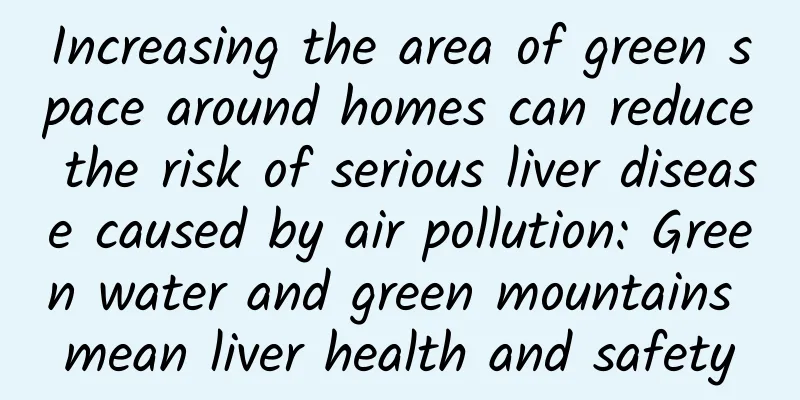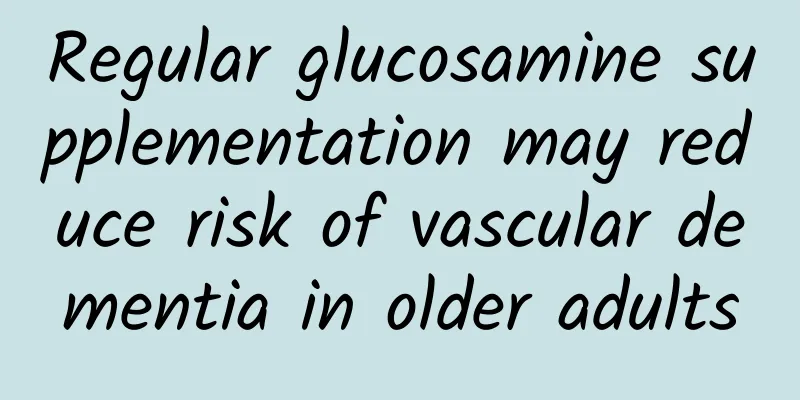Increasing the area of green space around homes can reduce the risk of serious liver disease caused by air pollution: Green water and green mountains mean liver health and safety

|
Approximately 2 million people die from liver disease each year, accounting for 3.5% of global deaths, of which approximately 1 million die from complications of cirrhosis and approximately 1 million die from viral hepatitis and hepatocellular carcinoma. Identifying and determining more modifiable risk factors to strengthen the prevention of severe liver diseases such as cirrhosis, liver failure, and hepatocellular carcinoma has important clinical and public health value. However, to date, no study has systematically evaluated the association between important environmental factors, including air pollution and the amount of green space around residential areas, and severe liver disease. Based on the above problems, researchers from Nanfang Hospital of Southern Medical University published a study titled "Various ambient air pollutants, residential green spaces, fibrosis 4 scores, genetic susceptibility, and risk of severe liver disease" in Ecotoxicology and environmental safety . Professor Sun Jian and Professor Qin Xianhui from Nanfang Hospital of Southern Medical University are the co-corresponding authors of the article, and Dr. Ye Ziliang is the first author. The study showed that the degree of air pollution was positively correlated with the risk of severe liver disease, while the area of green space around the residence was negatively correlated with the risk of severe liver disease. Increasing the area of green space around the residence can significantly weaken the positive correlation between air pollution and the risk of severe liver disease. The study is a prospective cohort study based on the UK Biobank, which included 427,697 participants without liver disease at baseline. The primary endpoint of the study was new severe liver disease, including compensated and uncompensated cirrhosis, liver failure and hepatocellular carcinoma. The study used air pollution scores to comprehensively evaluate air pollution conditions, including pollution from particulate matter and nitrogen oxides. The average air pollution score was 25.3 (standard deviation: 7.2) μg/m3, and the average proportion of greenery within 1000 meters around the participants' homes was 45.1% (standard deviation: 21.6%). Figure 1. Correlation between air pollution, green living environment and severe liver disease After 12.0 years of follow-up, 4,571 participants developed severe liver disease. The study showed that for every 7.2 μg/m3 increase in air pollution score, the risk of severe liver disease increased significantly by 7%. And for every 21.6% increase in the proportion of greenery within 1,000 meters around the residence, the risk of severe liver disease decreased significantly by 5% (Figure 1). Figure 2. Figure 2. Stratified Analysis of Air Pollution and Severe Liver Disease. Further stratified analysis found that an increase in the proportion of greenery around residential areas significantly reduced the risk of severe liver disease caused by air pollution. In addition, the study also found that liver fibrosis score (FIB-4), blood pressure status and smoking status also affect the association between air pollution and severe liver disease, that is, maintaining liver fibrosis score, normal blood pressure and not smoking may also reduce the risk of severe liver disease caused by air pollution (Figure 2). (Pictures from the Internet, copyright belongs to the original author) In conclusion, this study provides new evidence for the relationship between environmental pollution, residential greenery and the risk of severe liver disease. The results call for attention to the impact of environmental pollution and residential green space on health. At the same time, the study also emphasizes the important synergistic role of liver fibrosis, hypertension, smoking and air pollution in causing severe liver disease, providing new ideas and clues for future related research. References: Ye, Z., Liu, M., He, P., Wu, Q., Yang, S., Zhang, Y., Zhou, C., Zhang, Y., Gan, X., Sun, J., & Qin, X. (2023). Various ambient air pollutants, residential green spaces, fibrosis 4 scores, genetic susceptibility, and risk of severe liver disease. Ecotoxicology and environmental safety, 263, 115246. Advance online publication. Editor | Ye Ziliang Xianghao Audit | Qin Xianhui Reprint: Please contact us and indicate the source. |
>>: Flu occurs every year, why is it so severe this year?
Recommend
What is the cause of numbness in the left leg of a pregnant woman?
Pregnancy is a stage that every woman must go thr...
Why do I have diarrhea during menstruation?
Menstruation is a physiological phenomenon that a...
What should I do if I have nipple acne? Please learn these methods!
People often get acne on their bodies. The reason...
Do you occasionally have sex during menstruation?
For some couples, it is a headache to have menstr...
Is it normal to urinate frequently during pregnancy?
Many people become overly nervous when they are p...
Why do I have to pay for central heating? When is the latest time to pay for heating in Tianjin?
Every winter, you need to pay heating fees. If yo...
Does running during breastfeeding affect milk secretion?
During the period of aeration, most mothers start...
8 months pregnant legs swollen girl
Edema will occur in the eighth month of pregnancy...
What happened if I bleed the next day after taking medicine?
Nowadays, people generally choose artificial abor...
One labia is swollen
If a woman has swelling on one side of her labia,...
How long does it take for menstruation to come normally after uterine curettage?
As society continues to develop, abortion has bec...
Do you have a sensitive nose in the fall? Let’s take a look at the climate diseases that occur during the season change!
Right now, as the summer and autumn seasons chang...
Can women have sex after acupuncture?
Acupuncture is a relatively traditional way of tr...
Three physiological strictures of the ureter
The urethra tube connects to the renal pelvis abo...
Are you sensitive to your sleeping environment? 5 ways to help you desensitize
There are many factors that affect sleep, includi...









